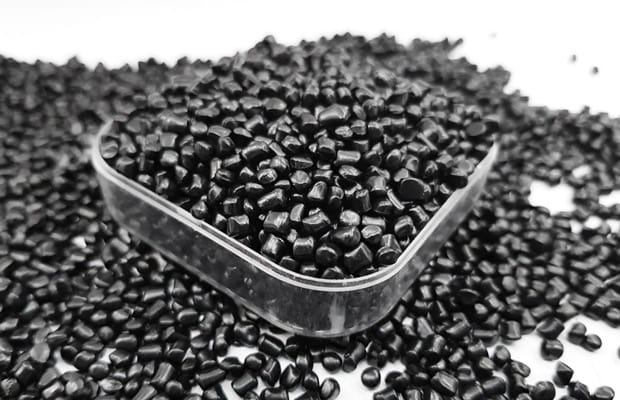High-Density Polyethylene (HDPE) is one of the most versatile and widely used thermoplastics in the world. However, when enhanced with specialized additives, fillers, or reinforcements, it becomes an HDPE compound—a material tailored to meet the specific demands of various industries. This guide explores everything you need to know about HDPE compounds, including their properties, types, applications, and benefits.
What is an HDPE Compound?
An HDPE compound is a customized formulation of High-Density Polyethylene that is blended with additives, fillers, or reinforcements to enhance its properties for specific applications. While HDPE itself is known for its high strength-to-density ratio, chemical resistance, and durability, compounding it with additional materials allows manufacturers to create a material with tailored characteristics.
HDPE compounds are engineered to meet the unique requirements of industries such as packaging, automotive, construction, healthcare, and more. By incorporating additives like stabilizers, pigments, flame retardants, or impact modifiers, HDPE compounds can achieve improved performance in areas such as UV resistance, thermal stability, and mechanical strength.
HDPE Compounds Base Resin
High-Density Polyethylene (HDPE, a type of Polyethylene) compounds are formulated using HDPE base resin as the primary polymer, which provides the material with its core properties such as high strength-to-density ratio, chemical resistance, and durability. The base resin, derived from the polymerization of ethylene, serves as the foundation for the compound, determining its mechanical, thermal, and processing characteristics. Depending on the application, HDPE base resin can be either a homopolymer (offering high stiffness and strength) or a copolymer (enhanced flexibility and impact resistance).
HDPE Compound Structure
What sets HDPE apart from other Polyethylene Grades is its linear structure. Unlike low-density polyethylene (LDPE), which has a branched structure, HDPE molecules form long, straight chains with minimal branching:
- Linear structure: ——— (HDPE)
- Branched structure: —<— (LDPE)
The structure of an HDPE compound is based on the molecular arrangement of High-Density Polyethylene combined with additives, fillers, or reinforcements. HDPE itself is a linear polymer with minimal branching, resulting in a tightly packed, crystalline structure that provides high strength and density. When compounded, this base structure is enhanced with additional materials to improve specific properties.
The additives are uniformly dispersed within the HDPE matrix, creating a homogeneous blend that retains the core characteristics of HDPE while gaining enhanced functionality. For example, fillers like glass fibers increase stiffness, while UV stabilizers protect the polymer chains from degradation. The result is a versatile material with a well-engineered structure tailored to meet the demands of various applications.
HDPE Compounds Additives
HDPE compounds are enhanced with various additives to improve their properties, processability, and performance for specific applications. These additives are carefully selected and blended with the base HDPE resin to achieve desired characteristics. Below is a detailed list of common additives used in HDPE compounds:
1. Stabilizers
Purpose: Protect HDPE from degradation caused by heat, UV light, and oxidation.
Types:
- UV Stabilizers: Prevent degradation from sunlight exposure (e.g., hindered amine light stabilizers).
- Antioxidants: Prevent oxidation during processing and use.
- Thermal Stabilizers: Enhance heat resistance.
Applications: Outdoor products, pipes, and automotive parts.
2. Fillers
Purpose: Improve mechanical properties, reduce cost, or modify density.
Types:
- Mineral Fillers: Talc, calcium carbonate, or silica for stiffness and dimensional stability.
- Glass Fibers: Enhance strength and rigidity.
Applications: Industrial containers, automotive components, and construction materials.
3. Pigments and Colorants
Purpose: Add color for aesthetic or functional purposes.
Types:
- Organic Pigments: Bright colors.
- Inorganic Pigments: Heat and UV stability (e.g., titanium dioxide for white).
Applications: Consumer goods, packaging, and toys.
4. Flame Retardants
Purpose: Reduce flammability and meet fire safety standards.
Types:
- Halogenated Flame Retardants: Bromine or chlorine-based.
- Non-Halogenated Flame Retardants: Phosphorus or mineral-based.
Applications: Electrical enclosures, cables, and construction materials.
5. Impact Modifiers
Purpose: Improve toughness and resistance to cracking or breaking.
Types:
- Elastomers: Ethylene-propylene rubber (EPR) or styrene-butadiene rubber (SBR).
Applications: Automotive bumpers, storage bins, and industrial containers.
6. Lubricants
Purpose: Improve processability, reduce friction, and enhance surface finish.
Types:
- Internal Lubricants: Reduce melt viscosity (e.g., waxes).
- External Lubricants: Improve mold release (e.g., stearates).
Applications: Thin-walled containers, caps, and closures.
7. Foaming Agents
Purpose: Create a lightweight, cellular structure.
Types:
- Chemical Foaming Agents: Decompose to release gas during processing.
- Physical Foaming Agents: Inert gases are injected during extrusion.
Applications: Insulation materials, floating devices, and lightweight packaging.
8. Processing Aids
Purpose: Enhance melt flow and reduce defects during processing.
Types:
- Fluoropolymers: Improve surface finish and reduce melt fracture.
Applications: Extrusion and injection molding processes.
9. Reinforcements
Purpose: Enhance mechanical properties like strength and stiffness.
Types:
- Glass Fibers: For high strength.
- Aramid Fibers: For impact resistance.
Applications: Automotive parts, industrial containers, and structural components.
By carefully selecting and combining these additives, HDPE compounds can be customized to meet the specific requirements of various industries, including packaging, automotive, construction, healthcare, and electronics. The choice of additives depends on the desired properties, processing methods, and end-use application.
HDPE compounds properties
HDPE compounds offer a wide range of properties that make them suitable for diverse applications. These properties can be customized based on the additives and reinforcements used. Here are some of the key characteristics of HDPE compounds:
- High Strength-to-Density Ratio
HDPE compounds are lightweight yet strong, making them ideal for applications where weight reduction is critical without compromising strength.
- Chemical Resistance
HDPE compounds are resistant to a wide range of chemicals, including acids, bases, and solvents, making them suitable for use in harsh environments.
- Moisture Resistance
With low moisture absorption, HDPE compounds are perfect for applications exposed to water or humidity.
- Thermal Stability
HDPE compounds can withstand temperatures up to 120°C (248°F) continuously, and with the right additives, their thermal stability can be further enhanced.
- UV Resistance
UV stabilizers can be added to HDPE compounds to protect them from degradation caused by sunlight exposure, making them ideal for outdoor applications.
- Flame Retardancy
Flame retardant additives can be incorporated to reduce flammability, making HDPE compounds suitable for safety-critical applications.
- Impact Resistance
Impact modifiers can improve the toughness of HDPE compounds, making them resistant to cracking or breaking under stress.
- Recyclability
HDPE compounds are recyclable, contributing to sustainability efforts and reducing environmental impact.
HDPE Compounds types
HDPE compounds can be categorized based on the additives and reinforcements used. Here are some of the most common types:
-
Reinforced HDPE Compounds
These compounds include fillers like glass fibers, talc, or minerals to improve mechanical properties such as stiffness, strength, and dimensional stability.
-
UV-Stabilized HDPE Compounds
UV stabilizers are added to protect the material from degradation caused by sunlight exposure, making it suitable for outdoor applications.
-
Flame-Retardant HDPE Compounds
Flame retardants are incorporated to reduce flammability and meet safety standards for fire resistance.
-
Antistatic and Conductive HDPE Compounds
Additives like carbon black or conductive fillers are used to reduce static buildup or provide electrical conductivity.
-
Pigmented HDPE Compounds
Pigments or colorants are added to achieve specific colors for aesthetic or functional purposes.
-
Impact-Modified HDPE Compounds
Impact modifiers like elastomers are blended with HDPE to enhance toughness and resistance to cracking or breaking under stress.
-
Foamed HDPE Compounds
Foaming agents are used to create a lightweight, cellular structure, reducing density while maintaining strength.
-
Crosslinked HDPE (XLPE) Compounds
Crosslinking improves thermal stability, chemical resistance, and mechanical strength.
-
Recycled HDPE Compounds
Made from post-consumer or post-industrial recycled HDPE, these compounds promote sustainability while maintaining performance.
HDPE Compounds Processing
1. Selection Of Base Resin
The first step is selecting the appropriate HDPE resin based on the desired properties of the final product. Different Manufacturers Offer HDPE Resins With Varying Molecular Weights And Densities, Which Affect The Material’s Stiffness, Strength, And Chemical Resistance.
2. Additive Selection
Based On The Application, Suitable Additives Are Selected. For Example:
- Fillers Like Talc Or Calcium Carbonate Can Reduce Costs And Improve Specific Mechanical Properties.
- Plasticizers Make The Material More Flexible.
- Stabilizers Protect Against UV Degradation.
- Colorants Are Used For Coloring The Material.
- Impact Modifiers Increase The Material’s Resistance To Fracture Under High-Stress Conditions.
3. Compounding
In this step, the base resin and additives are mixed using a compounding machine. This Process Can Involve Melting The Resin, Adding The Additives, and then mixing them thoroughly to ensure a uniform distribution of the additives throughout the resin matrix.
4. Extrusion Or Injection Molding
Once The Compound Has Been Prepared, It Can Be Shaped Into Various Forms Through Processes Like Extrusion Or Injection Molding. These Methods Allow For Products Ranging From Pipes And Sheets To Complex Geometries.
5. Post-Processing
After Shaping, The Material May Undergo Additional Treatments Such As Annealing, Surface Treatment, Or Printing To Achieve The Desired Finish And Functionality.
6. Testing
Finally, The Compound HDPE Material Is Tested To Ensure It Meets The Required Specifications For Strength, Flexibility, Chemical Resistance, And Any Other Relevant Properties.
HDPE Compounds Applications
Packaging
HDPE compounds are widely used in packaging applications such as bottles, containers, caps, and films. Their chemical resistance and durability make them ideal for storing food, beverages, and chemicals.
2. Pipes and Fittings
HDPE compounds are commonly used in the production of HDPE pipes and fittings for water, gas, and sewage systems. Their moisture resistance and durability ensure long-lasting performance.
3. Automotive
In the automotive industry, HDPE compounds are used for fuel tanks, bumpers, and interior components. Their lightweight nature and impact resistance make them ideal for these applications.
4. Consumer Goods
HDPE compounds are used in the production of consumer goods such as toys, household items, and storage bins. Their durability and customizable colors make them popular in this sector.
5. Industrial
HDPE compounds are used in industrial applications such as chemical storage tanks, liners, and industrial containers. Their chemical resistance and strength make them suitable for harsh environments.
6. Construction
In the construction industry, HDPE compounds are used for geomembranes, insulation, and structural components. Their durability and resistance to environmental stress make them ideal for these applications.
7. Healthcare
HDPE compounds are used in healthcare applications such as medical devices and pharmaceutical packaging. Their high purity and chemical resistance ensure safety and reliability.
Benefits of HDPE Compounds
- Customizability: Tailored with additives to meet specific application needs.
- Durability: Resistant to impact, chemicals, and environmental stress.
- Lightweight: Low density ideal for weight-sensitive applications.
- Cost-Effective: Optimizes performance while keeping costs low.
- Recyclability: Environmentally friendly and sustainable.
- Versatility: Suitable for a wide range of industries and applications.
- Enhanced Properties: Improved UV resistance, flame retardancy, and thermal stability.
- Ease of Processing: Compatible with various manufacturing methods like injection molding and extrusion.
HDPE compounds offer a perfect balance of performance, sustainability, and cost-efficiency.
Conclusion
HDPE compounds are a highly versatile and customizable material that offers a wide range of properties and benefits. By blending HDPE with specialized additives, fillers, and reinforcements, manufacturers can create materials tailored to meet the specific demands of various industries. From packaging and automotive to construction and healthcare, HDPE compounds are used in countless applications due to their durability, chemical resistance, and cost-effectiveness.
Whether you need UV-stabilized HDPE for outdoor use, flame-retardant HDPE for safety-critical applications, or recycled HDPE for sustainable solutions, HDPE compounds provide a reliable and efficient material choice. As industries continue to evolve, the demand for high-performance, customizable materials like HDPE compounds will only grow, making them an essential component of modern manufacturing.
By understanding the properties, types, applications, and benefits of HDPE compounds, you can make informed decisions about the best material for your specific needs. Whether you’re designing a new product or optimizing an existing one, HDPE compounds offer the flexibility and performance required to succeed in today’s competitive market.

